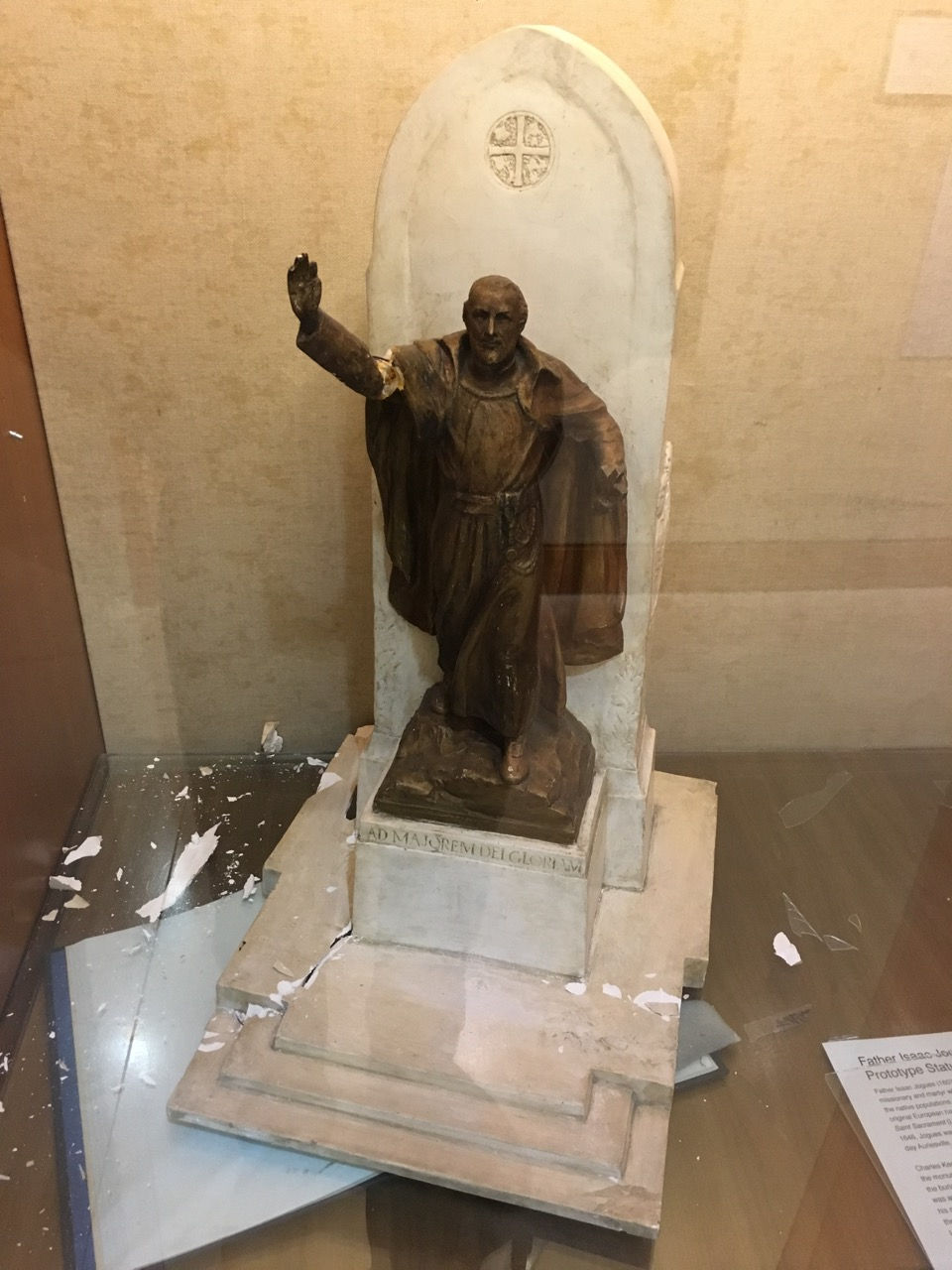Father Isaac Jogues comes home
- Todd DeGarmo
- Mar 10, 2021
- 3 min read
Father Isaac Jogues came home last fall. I brought him back to the Folklife Center from Kasia Maroney Conservation, LLC in Trumansville, New York, where he spent a year (much of it due to Covid) at the southwestern end of Cayuga Lake.

The good Father of which I speak, is a maquette, or scale model (in painted gypsum plaster, cast from a clay original) of a local, giant bronze statue of Father Isaac Jogues. You can visit this memorial statue in Lake George Battlefield Park, where it was dedicated by the State of New York on July 3, 1939. For commissioned, monumental public sculptures such as this, a maquette was often used to visualize ideas before incurring the expense and effort of producing a full-scale piece.


Charles Keck (1875-1951) is the New York City sculptor who created both the monument and its maquette. Known for his monuments and architectural sculptures, Keck studied at the National Academy of Design and the Art Students League of New York. He also attended the American academy in Rome, and in 1921 became a member of the National Academy of Design. His most famous works include statues of Booker T. Washington (Tuskegee, Alabama), Abraham Lincoln (Washbash, Indiana), Father Francis D. Duffy (Times Square, NYC), Andrew Jackson (Kansas City, Missouri).
Father Isaac Jogues (1607-1646), the person, was a French Jesuit priest, missionary, and martyr who traveled and worked among the native populations of North America. He gave the original European name to Lake George, calling it Lac Du Saint Sacrament (Lake of the Blessed Sacrament). In 1646, Jogues was martyred by the Mohawks near present day Auriesville, New York.
In the summer of 2019, an exhibit display shelf holding our Father Jogues maquette collapsed. The damage was extensive, as outlined in conservator Kasia Maroney's treatment report:
"The cast [Father Jogues maquette] was presented in seven main pieces, with several shards that had fallen away at the break lines. There were no missing sculptural elements, and minimal missing material. Approximately 30 fragments of the base and figure were collected, most of which was used in the restoration."

"The bottom of the base had suffered a long structural crack that had splintered, rending it loose and quite unstable under the weight of the cast."

"An old repair to the proper right arm had failed, exposing the internal steel casting support and a thick layer of yellowed old glue, which remained on both sides of the previous join."

"Several scuffs and abrasions, scratches, and areas of excessive wear could be found on the robes, feet, and hands."

A fine art object conservator, Kasia Maroney, went to work on our Father Jogues. We knew he was in the good hands of an expert with over 20 years experience, serving such clients as Cornell University, Vassar College and the University of Rochester. Her general order of treatment was to clean, repair and stabilize, then to "restore," or add material and color to bring the cosmetic quality of the object closer to its original condition.
She even repaired Jogues' right, outstretched arm that had been glued by an amateur sometime before 1986, the time I first met him on display in the Holden Room at the Library. She also notes, "The figure's proper right index finger was not added, as its absence is a feature of the saint's martyrdom and therefore of the original sculpture." We confirmed this lack of finger by phone.
It's great to have Father Isaac Jogues back in the Folklife Center, and we look forward to the day when our patrons can also admire his restoration. Of her work, Kasia Maroney says, "Excellent restoration work often seems quiet and magical - in the end, it should look like I wasn't there at all."


Yorumlar